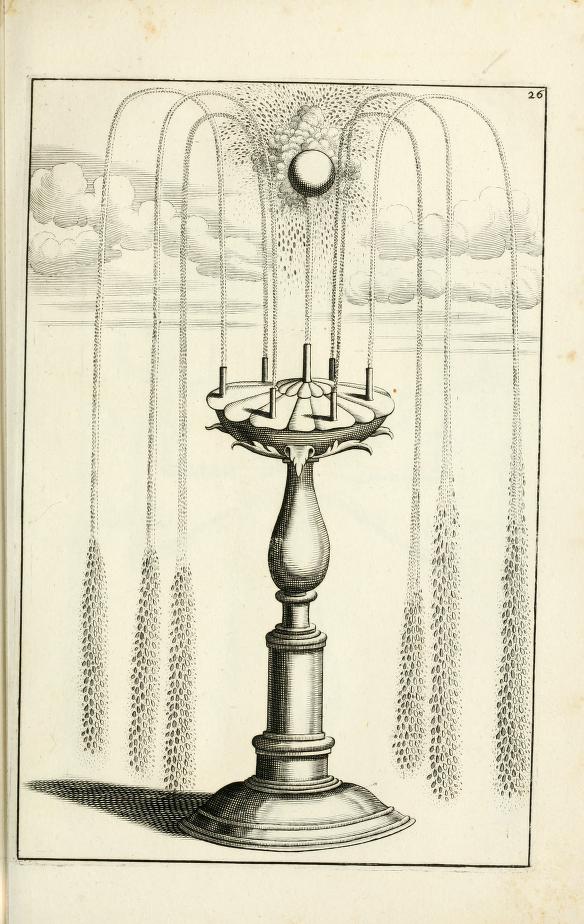¨¨¨¨¨
Georg Andreas Böckler (1617 – 1687) was a German architect and engineer. He also wrote about architecture and related topics such as hydraulics. Published in 1664, Architectura curiosa nova features dozens of designs for fountains, showing how water could be manipulated by means of hydraulics to create an extraordinary range of different effects.
The first section of his book discusses the internal workings of fountains, while these illustrations from the second section represent a small sample of the 71 fountain designs shown. By comparison to some of the fountains that follow later in the book they are relatively straightforward in their construction, with jets of water emanating from one central column or pedestal.
The effect of these seeming endless variations of fountain designs is rather like a plant catalogue showing different hybrid flower shapes; like a succession of dahlias with the rolled, pointed petals of the cactus varieties, or the pompons with their round, ball shapes.
Some of the fountain pedestals resemble domestic items, like candelabra; in others the water performs a trick; holding up a ball, or tells a joke, where the fountain rains down onto a figure holding an umbrella. The texture of the water ranges from single jets sprays, to continuous surfaces, created by rows of jets placed next to each other. When the jets are directed upwards in a circle, the water forms a bowl shape, or if the jet circle is perpendicular to the ground, a curious circular shape is formed, like a flower or a Catherine wheel, (although I don’t believe the mechanism would have spun around).












These jets seem to resemble a wheat sheaf






